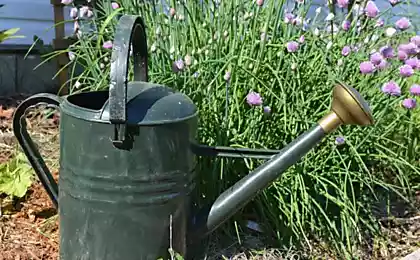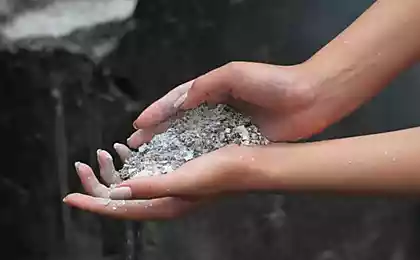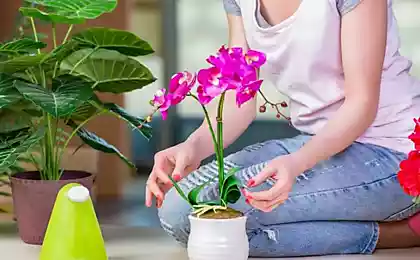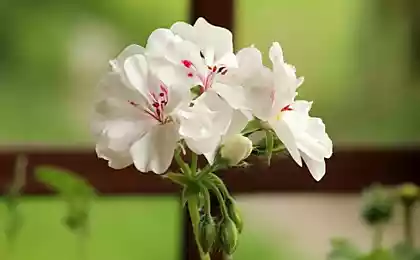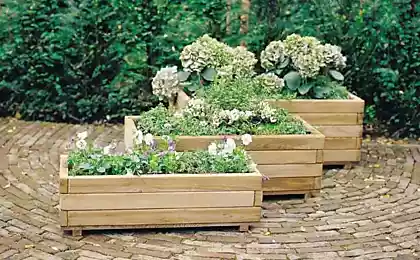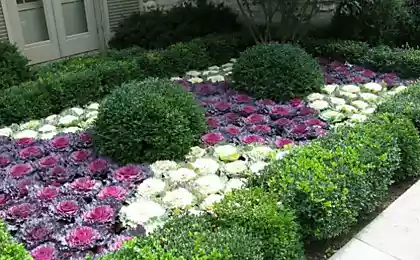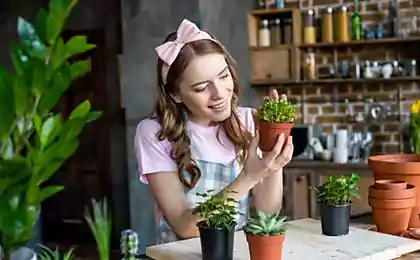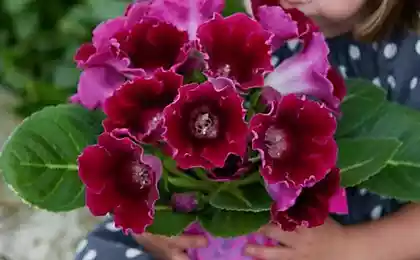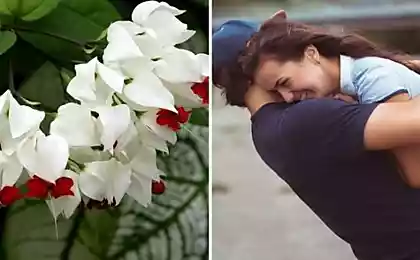162
Saving fading flowers, or how to resuscitate your mother’s pot
Recently I went to my mother for tea and noticed a stunted pot on her windowsill. "Ah, this one. I'm throwing it away. Something he does not grow at all, Ma slowly sculpted. Of course, I couldn't let a green friend just die. So I took him home and immediately began resuscitation. For help, I turned to a friend who ate a dog while caring for pots. Lenka told me in detail, How to save indoor plants at home.

Having received such a valuable arsenal of knowledge, I could not help sharing it with you, dear reader. In this article you are waiting for a whole A selection of practical tips for saving fading flowers. I hope they will help you breathe new life into your favorite houseplant.
Houseplants at home How to save the pot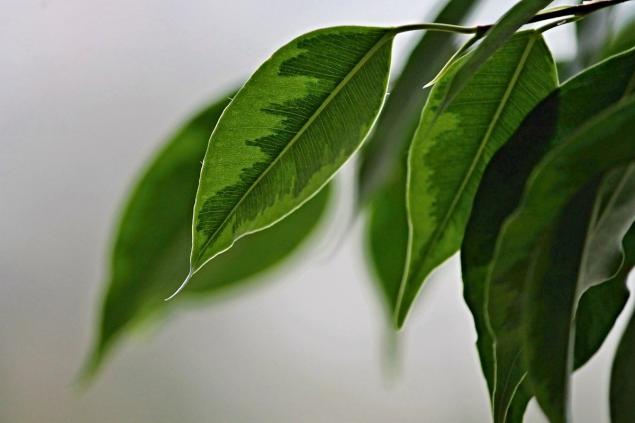
The plant can be transplanted into coconut fiber, washing the roots with peroxide. As a result, new leaves will begin to appear. Faded leaves can be revived with carbonated mineral water. Just spray the plant regularly and you will begin to notice the results. A houseplant can be attacked by a spider mite. It can be eliminated with a hard sponge and household soap. Wet the sponge in soapy solution and wipe all the leaves on both sides. Then send the plant to the so-called quarantine. Just put the pot in a bag with a vent. But if this folk method did not help, you will have to use special drugs.
If the plant has lost its appearance, there is a possibility that It lacks nutrients.. In this case, various kinds of feeding come to the rescue. For example, glucose water works well. Glucose can be obtained from regular sugar, but this is not the most convenient way. The easiest way to buy ready-made glucose in a pharmacy and dilute 1 tablet of a substance in 1 liter of water. Water and spray the pot 1 time a month.

To increase the acidity of the soil, mix the soil with fresh coffee grounds. Such dressing is suitable, for example, for azalea, hydrangea, anthurium and fuchsia. Another great natural fertilizer. wood ash. It can be added to the soil during plant transplantation. Or we can make liquid feeding. To do this, it is enough to mix 1 tbsp. l. ash with 1 liter of water and water the vases.
Sometimes they just don’t like where they are. So they start to dry up, showing you what the problem is. There are many factors that can affect the health of your green friend. And for each specific vase there are loopholes to care for it. Nevertheless, save indoor plants at home You definitely can. I hope this article will help you. And if you have your own effective ways, be sure to share them in the comments!

Having received such a valuable arsenal of knowledge, I could not help sharing it with you, dear reader. In this article you are waiting for a whole A selection of practical tips for saving fading flowers. I hope they will help you breathe new life into your favorite houseplant.
Houseplants at home How to save the pot
- The first dry twigs and sluggish leaves are a sure sign that the pot needs help. First of all, it is necessary to trim all dry branches to revive the plant. For example, ficus in this case can be transplanted into a new pot and regularly sprayed with water. The fact is that due to the dry air in the room, the plant can completely shed all the leaves. Therefore, ideally, it is best to maintain a stable humidity level in the apartment.
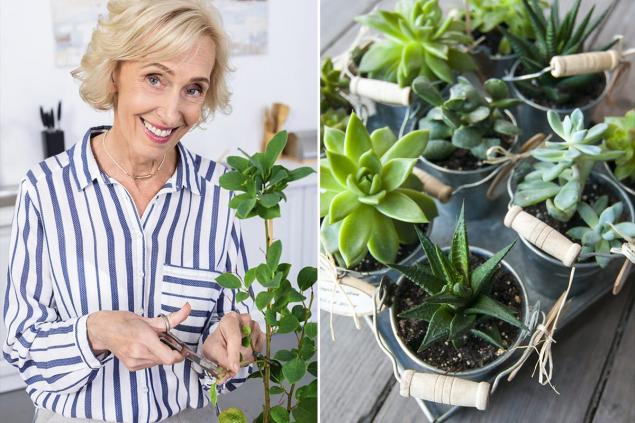
- Others say the hasty change of pot and ground is stressful for the plant. Therefore, it is recommended to spray it with succinic acid every other day. 1 liter of water will need 1 tablet substance. At the same time, it is important not to transfuse the pot, otherwise it can also shed the leaves.
- Do not place a wilted pot in the sun. He will lose even more power and will surely die. In addition, not all plants are normal to the draft. So it's better to keep a green friend away from him.
- In saving the house plant, ordinary yeast will help you. Just dilute 25 g of live yeast in 3 liters of warm water. Also add 2 tsp of sugar. Put the mixture in the sun for the whole day so that it begins to wander. Stir the remedy sometimes. The result is a natural feeding, which should be used for evening watering of plants.
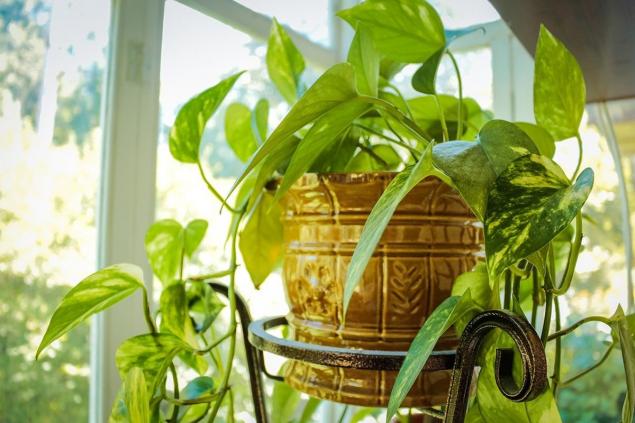
- Another interesting way to resuscitate a green friend. First, there must be a lot of holes in the pot. Secondly, you need to fill a pot pan or just a bowl of 1 liter of water, add 1 tbsp of sugar and 1 tablet of succinic acid. The pot will be in a kind of bath with fertilization and at the same time take as much water as it needs.
- If possible, you can pour chicken droppings at the bottom of the pot. In a team with fresh earth, natural fertilizer will help to reanimate the indoor plant.
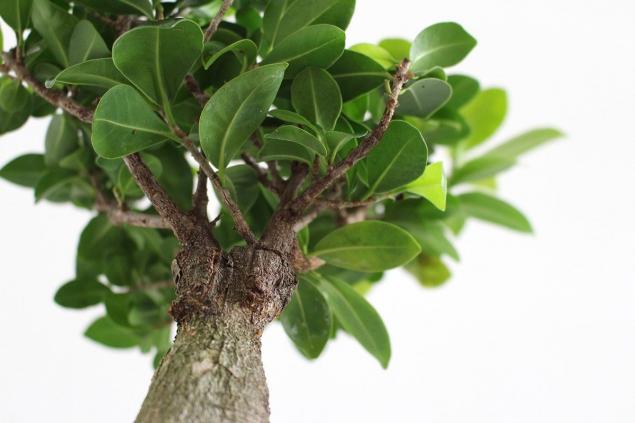

The plant can be transplanted into coconut fiber, washing the roots with peroxide. As a result, new leaves will begin to appear. Faded leaves can be revived with carbonated mineral water. Just spray the plant regularly and you will begin to notice the results. A houseplant can be attacked by a spider mite. It can be eliminated with a hard sponge and household soap. Wet the sponge in soapy solution and wipe all the leaves on both sides. Then send the plant to the so-called quarantine. Just put the pot in a bag with a vent. But if this folk method did not help, you will have to use special drugs.

If the plant has lost its appearance, there is a possibility that It lacks nutrients.. In this case, various kinds of feeding come to the rescue. For example, glucose water works well. Glucose can be obtained from regular sugar, but this is not the most convenient way. The easiest way to buy ready-made glucose in a pharmacy and dilute 1 tablet of a substance in 1 liter of water. Water and spray the pot 1 time a month.

To increase the acidity of the soil, mix the soil with fresh coffee grounds. Such dressing is suitable, for example, for azalea, hydrangea, anthurium and fuchsia. Another great natural fertilizer. wood ash. It can be added to the soil during plant transplantation. Or we can make liquid feeding. To do this, it is enough to mix 1 tbsp. l. ash with 1 liter of water and water the vases.
Sometimes they just don’t like where they are. So they start to dry up, showing you what the problem is. There are many factors that can affect the health of your green friend. And for each specific vase there are loopholes to care for it. Nevertheless, save indoor plants at home You definitely can. I hope this article will help you. And if you have your own effective ways, be sure to share them in the comments!
How Uzbek sellers can easily tolerate the heat and work in the sun
How to Spend Ilyin’s Day on August 2 to Respect Your Beloved Saint



